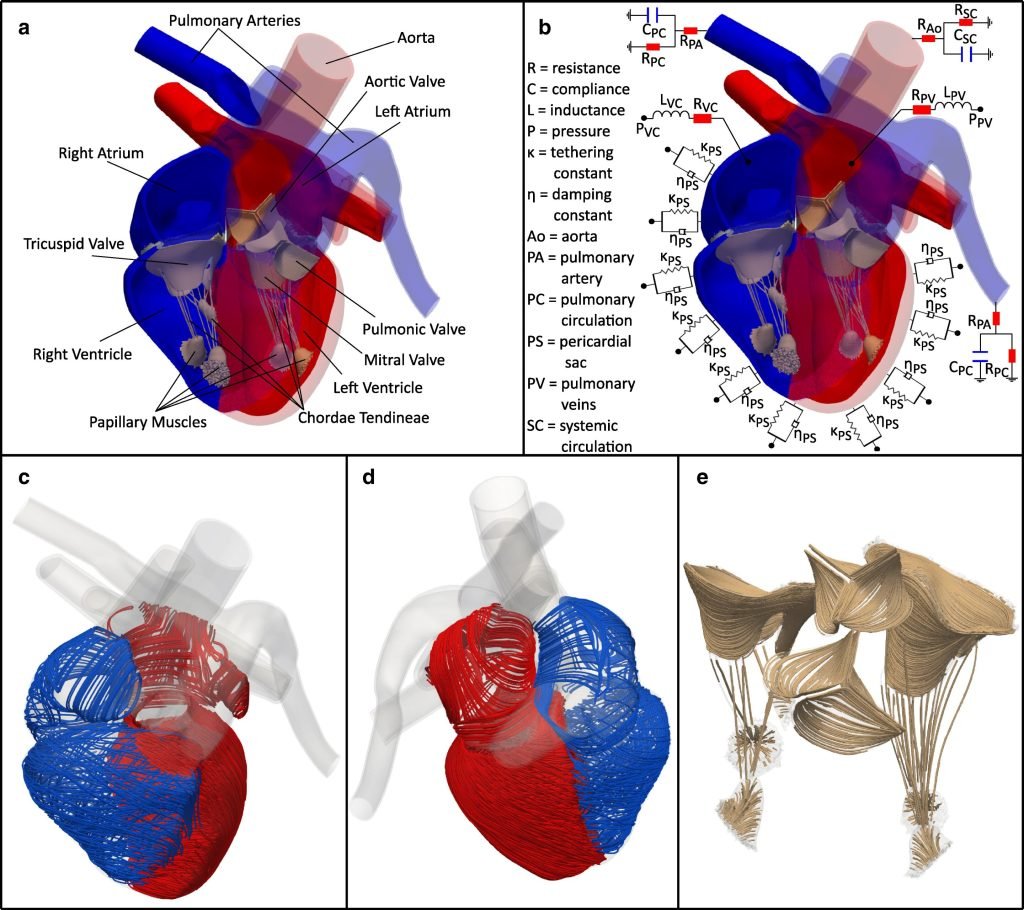
A team led by researchers at UNC-Chapel Hill have developed an innovative computer model of blood flow in the human heart that promises to transform how we understand, diagnose, and treat heart conditions. This new model, grounded in realistic mathematical descriptions of the heart’s anatomy and physiology, successfully captures normal heart function and can predict how the heart responds to different levels of blood flow.
The study advances the state-of-the-art in simulating heart function by incorporating three-dimensional, biomechanically detailed representations of all major cardiac structures—derived from cardiac CT imaging and human tissue data—to predict valve performance and model tissue biomechanics. The research paper is available in the journal PNAS Nexus.
As a result, the team’s model can more accurately evaluate heart function and responses to interventions. Importantly, it produces physiological behaviors, including pressure-volume loops and realistic responses to changing conditions, inherently from its comprehensive description of cardiac physiology.
The newly developed model has potential applications in various fields, including:
- Medical device design: The model can help design more effective devices by predicting changes in heart function.
- Personalized therapy: By offering patient-specific simulations, the model could be used to optimize treatment strategies tailored to individual needs.
- Cardiac digital twins: The model could provide forecasts of changes in heart health or disease progression that can support comprehensive treatment plans.
Boyce Griffith, director of the study and professor of mathematics and biomedical engineering at UNC-Chapel Hill, emphasized the significance of this work, “I think that this work is exciting because it lays the groundwork for many different possible applications, including medical device design, treatment optimization, and even clinical decision-making.”
The comprehensive nature of the model sets it apart from previous efforts, providing a more precise and reliable tool for understanding the complex dynamics of the heart. Currently, it stands as the most complete computer model of cardiac fluid dynamics and fluid-structure interaction, and ongoing work aims to extend it to include cardiac electrophysiology, which has the potential to expand its impacts to a broader range of heart disorders, devices, and treatments.
More information:
Marshall Davey et al, Simulating cardiac fluid dynamics in the human heart, PNAS Nexus (2024). DOI: 10.1093/pnasnexus/pgae392
Citation:
Advanced heart model can provide patient-specific simulations (2024, November 5)
retrieved 5 November 2024
from https://medicalxpress.com/news/2024-11-advanced-heart-patient-specific-simulations.html
This document is subject to copyright. Apart from any fair dealing for the purpose of private study or research, no
part may be reproduced without the written permission. The content is provided for information purposes only.








